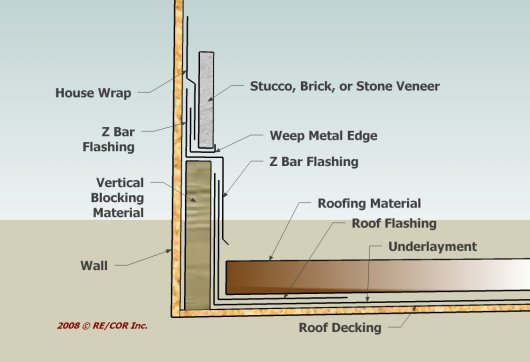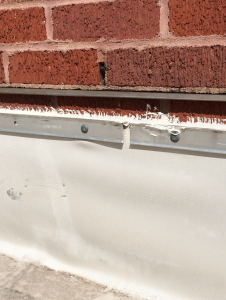This way each time in the future when the roofing material is replaced the stucco brick or stone veneer will not need to be cut out and replaced.
Terminating brick veneer on low roofing.
The exterior wall covering material is then kept off the surface of the roof.
Outside face of the veneer through the thickness of the brick veneer across the air space to the backing and then up behind the water resistant barrier or attached over the water resistant barrier with a termination bar.
If made of sheet metal veneer ties shall be not smaller in area than 0 0336 by 1 inch 0 853 by 25 mm or if made of wire not smaller in diameter than 0 1483 inch 3 76 mm wire.
The tall interior single wythe cmu wall transitions into an anchored veneer wall above the roof line.
A critical and often overlooked design detail is at the termination of a parapet coping at a wall.
The most common mistake at this intersection is to allow the metal coping to but up to the wall without the application of termination metal.
The open web steel joists of the roof structure bear on the tall cmu wall via a steel bearing plate.
With solid masonry walls it s enough to secure the roofing membrane with a termination bar and counterflash with metal let into a mortar joint above the membrane.
Below is a sketch of what the flashing at roof to wall intersections should look like.
The veneer is supported below the roof by cmu or other supporting structure.
Above the roof a series of short masonry flashing components4 are mechanically fastened to the backup wall using a termination bar with continuous sealant5 along the top.
Roof wall interface detail anchored brick veneer cmu backing.
Where more than one piece of flashing is required flashing pieces should be overlapped and sealed with a compatible mastic.
At solid masonry walls a termination bar which will get lapped by a counterflashing let into the mortar joint can work but with brick veneer only through flashing will prevent leaks.





























